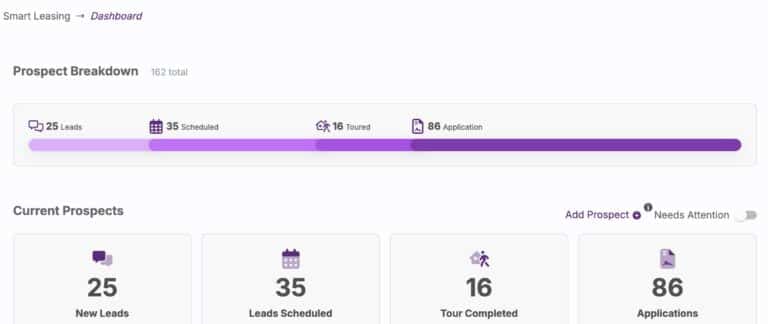As we make our way through the third quarter of 2021, it doesn’t take a crystal ball to see that there is no going back to the pre-pandemic way of doing business in Multifamily.
The economic downturn of 2020 helped to accelerate Multifamily technology trends that were already gaining traction. Apartment operators discovered that digital tools fueled by artificial intelligence were crucial in keeping their communities running smoothly during the pandemic, and now Multifamily is primed for further innovation.
Artificial intelligence can automate many tasks in the leasing process, making teams more efficient and improving customer service. But leasing automation is just one way that Multifamily has harnessed the power of AI and other smart technologies.
In this post, we will look at how emerging Multifamily technology trends could impact apartment living in 2022 and beyond.
Say goodbye to the leasing office.
Before the pandemic, an apartment community without a physical leasing office was unthinkable. Now, it may be the norm in the future. Leasing offices have shrunk over the years as many communities have gone paperless, and now we’re seeing connectivity starting to replace the physical office space.
The past year has shown that leasing agents can do their jobs without having a presence in the community. AI technology in the form of chatbots and virtual leasing agents make it possible to move the entire leasing process online. Going forward, a fully virtual leasing experience could be on the horizon, with just security and maintenance staff being present on site.
Say hello to the smart apartment.
AI-driven technology is starting to change apartment living and how we interact with our physical spaces. In-unit smart features are becoming more common as more residents continue to work from home, which is increasing the demand for more connected living spaces. The most typical smart feature in an apartment is a smart locking system, allowing residents to enter and exit their home with ease as well as monitor door activity. Smart thermostats and smart lights are also becoming more prevalent.
All of this smartness also extends to community features, like smart elevators, which can cut down on wait times, unnecessary stops, and ride times. Facial recognition could also grow, and resident behavior tracking could give property managers analytical data that they can use to guide decision-making around things like energy usage.
Emergency maintenance calls will decline with Multifamily Technology.
Within an apartment community, there are many AI elements that residents never see, including connected building systems such as fire alarm, HVAC, security, and electrical. These areas can be monitored and managed by a central building maintenance system, which relies on real-time data and AI-powered decision-making. This means buildings and apartments will run more efficiently, lowering operating costs.
It also means less inconvenience for apartment residents. With AI keeping tabs on the inner workings of an apartment community, residents can expect fewer surprise maintenance issues and emergencies, giving residents peace of mind.
WFH and WiFi go hand-in-hand.
The past year has shown that fast, reliable WiFi is a must-have for apartment residents, many of whom are continuing to work from home. This will require apartment communities to adopt additional tech capabilities to make their properties appealing to these workers. One way communities are doing this is by venturing into edge computing.
On one end of the spectrum is cloud computing, and on the other is edge computing. Edge computing places data-gathering resources closer to the user or the device rather than in a hyperscale cloud data center. Constantly sending data back and forth can take too long, as much as a few seconds, but with edge computing, the data centers are distributed so they’re at the “edge” of the devices and systems rather than far away. Internet is faster and AI is more efficient with edge computing, making life more convenient for residents.
Conclusion
Artificial intelligence is fueling the world around us—in some cases, it’s even inside the walls of our homes. While AI can be incredibly effective during the leasing process, that’s not all it can offer Multifamily. By understanding how we interact with AI and how it can be helpful in many areas of apartment life, we can anticipate what’s possible in the future.
ResMate AI Leasing Agent – is the newest addition to ResLease, our leasing automation suite. Using AI, this virtual leasing assistant automates lead nurturing and follow-ups, producing better results while also saving time and money. Reach out to learn how ResMate can help you maximize occupancy while minimizing resources.






